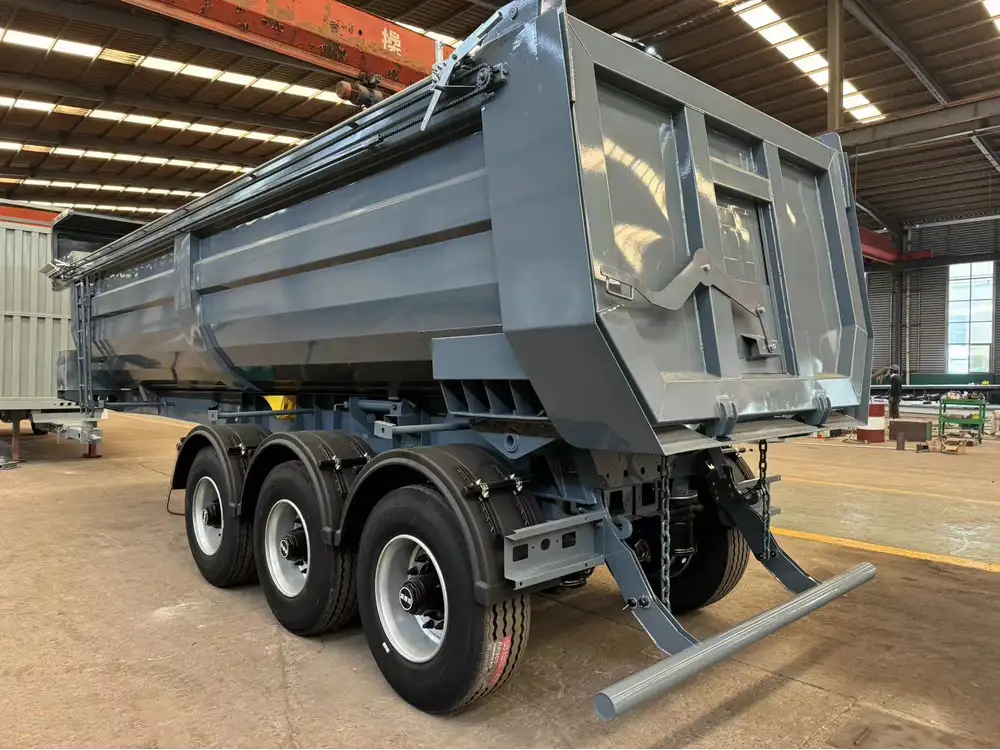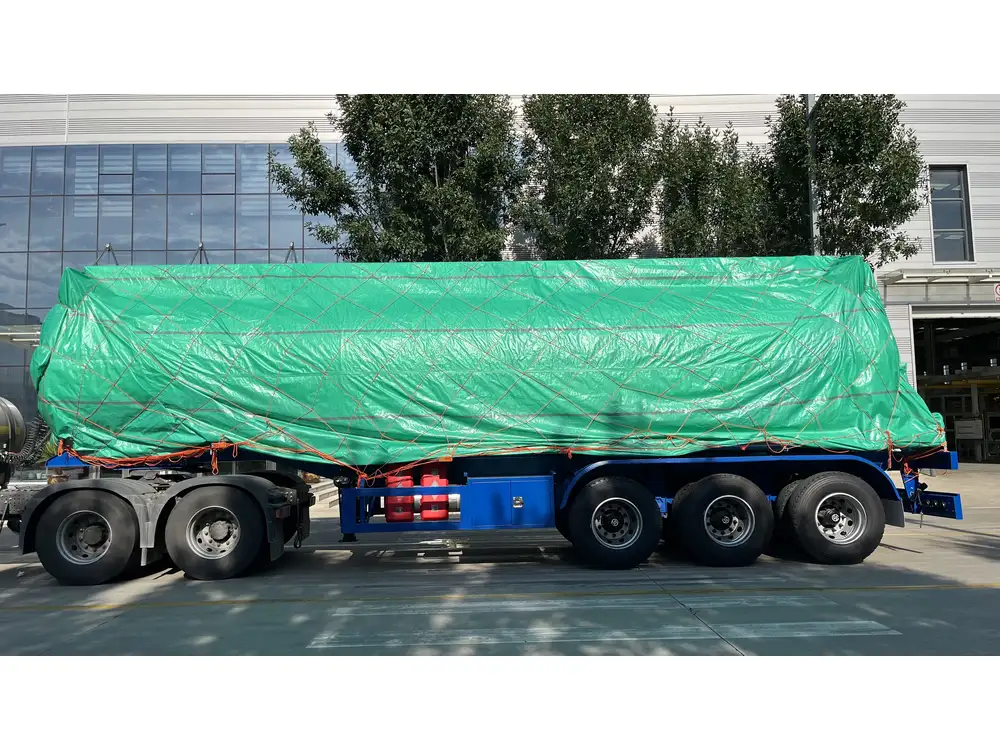Understanding the weight of a loaded semi-trailer is crucial for logistics, transportation management, and compliance with regulations. With variances based on cargo type, trailer design, and federal and state regulations, this article aims to provide in-depth insights into the weight considerations of loaded semi-trailers.
The Basics of Semi-Trailer Weights
Definition of Key Terms
- Gross Vehicle Weight Rating (GVWR): The maximum weight a vehicle can safely carry, including the weight of the truck, the trailer, and the cargo.
- Curb Weight: The weight of the trailer when empty, without cargo or passengers.
- Payload Capacity: The maximum allowable weight of cargo that a semi-trailer can carry.
| Term | Definition |
|---|---|
| GVWR | Total weight including truck, trailer, and cargo. |
| Curb Weight | Weight of the trailer alone, without cargo. |
| Payload Capacity | Maximum cargo weight capacity for the trailer. |

Average Weights of Semi-Trailers
The weight of a semi-trailer can vary widely depending on several factors, such as the trailer type and cargo. Here’s a quick overview of average weights:
| Trailer Type | Curb Weight (lbs) | Average Loaded Weight (lbs) | Payload Capacity (lbs) |
|---|---|---|---|
| Flatbed | 15,000 | 65,000 | 50,000 |
| Dry Van | 16,000 | 70,000 | 54,000 |
| Refrigerated | 18,000 | 80,000 | 62,000 |
| Tanker | 14,500 | 80,000 | 65,500 |
Federal and State Regulations
The Federal Highway Administration (FHWA) sets forth regulations that define weight limits for commercial vehicles. Generally, the federal bridge law limits the total weight of a vehicle to 80,000 pounds. However, specific state regulations may vary and require careful consideration.
Factors Influencing Loaded Semi-Trailer Weight

Type of Cargo
Different materials and goods can have drastically different weights. For instance:
- Bulk Materials (Grain, Sand, etc.): Heavier per volume, typically averaging 1,200 to 1,500 pounds per cubic yard.
- Beverages: A full truckload of bottled water can weigh upwards of 45,000 pounds.
- Automobiles: Transporting cars can have an average weight of 78,000 pounds for a loaded 5-car carrier.
- Scrap Metal: Transported scrap metal can exceed 50,000 pounds depending on load density.
Trailer Configuration
The design of the semi-trailer itself affects its empty weight and carrying capacity:
- Length: Longer trailers often have extra space for more cargo, but they also weigh more.
- Material: Aluminum trailers are lighter than steel counterparts and can carry more weight.
Load Distribution
Correct load distribution is essential not only for safety but also for optimizing weight handling:
- Axle Configuration: More axles generally distribute weight more evenly, thus enhancing payload capacity.
- Cargo Arrangement: Strategic placement of weight reduces the risk of vehicle instability and enhances road safety.

Calculating the Weight of a Loaded Semi-Trailer
Step-by-Step Calculation Process
- Determine Curb Weight: Obtain the specific curb weight of the semi-trailer.
- Calculate Cargo Weight: Assess the cargo type and weight based on dimensions and density.
- Sum It Up: Add the curb weight to the total cargo weight to find the loaded weight.
Example Calculation: For a flatbed trailer with a curb weight of 15,000 pounds and carrying 50,000 pounds of cargo:
- Curb Weight: 15,000 lbs
- Cargo Weight: 50,000 lbs
- Total Loaded Weight: 15,000 lbs + 50,000 lbs = 65,000 lbs
Importance of Accurate Weight Measurement
Maintaining accurate weight records is vital for compliance, safety, and efficiency. Overloaded vehicles can lead to penalties and damage to public infrastructure, while underloading can result in lost revenue opportunities.

Best Practices for Managing Semi-Trailer Weights
Regular Weight Checks
Routine checks to ensure that the weight adheres to legal limits can prevent serious violations and accidents.
- Use Weigh Stations: Take advantage of public weigh stations that are often located at rest areas and major highways.
- On-board Scales: Invest in on-board weighing systems that provide real-time weight readings to monitor load during transit.
Training and Education
Conduct training sessions for drivers and logistics professionals about:
- Recognizing signs of an overloaded trailer.
- Understanding weight distribution theories.

Equipment Selection
Choosing the right equipment can also improve payload efficiencies. Here’s how:
- Opt for Lighter Materials: Using aluminum rather than steel can lower the curb weight.
- Select Proper Axle Configurations: More axles yield greater weight distribution and better handling.
Conclusion: The Weight Considerations
Understanding how much a loaded semi-trailer weighs is a multifaceted endeavor influenced by numerous factors including cargo type, trailer configuration, federal regulations, and best practices in weight management.
As a manufacturer, recognizing these nuances allows you to create products tailored to meet the needs of the transportation industry while enhancing safety and efficiency.
When considering the transportation of goods via semi-trailer, always factor in the cargo type, regulatory requirements, and the best practices outlined. This structured approach promotes safe transportation practices and optimal operational efficiencies, leading to improved profitability and enhanced safety practices for everyone involved.
Key Takeaways:
- The average loaded weight of a semi-trailer varies based on factors like type and cargo.
- Adhere strictly to federal and state weight regulations.
- Regular weight checks can prevent costly penalties and accidents.
- Sound equipment and practices lead to better profitability and safety.
Proper understanding and management of semi-trailer weights not only optimize the operational capabilities of transportation fleets but are paramount in navigating the complexities of logistics today.



